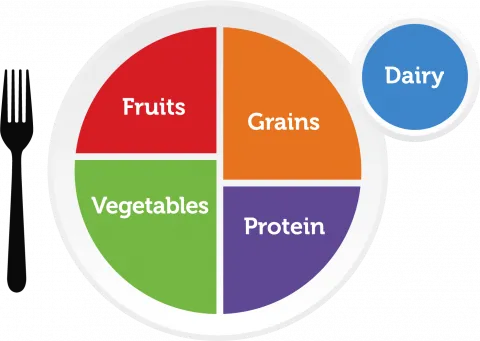
Getting off on the right lunch!
Michael Reisman, M.Ed.
For many families, a new school year means new opportunities to set healthy habits and routines. It’s a little funny when you think about it: January we make resolutions for our year, and September we make resolutions for our children! And for good reason. Summer is different for every family. For some, the routines adhere closely to what they were during the school year. Other families send their child(ren) off to residential (sleepaway) camps for weeks at a time, and still other families mix it up for their children in summer.
Whichever family you are, the final weeks of August mean getting back into the groove of bedtime, wakeup, dropoff and nutrition routines. Getting the school year off on the right “lunch” is important for setting the nutritional bar for students, whether your family prepares lunch from home, or your child is enrolled in school lunch. As a father of a 13-year-old boy here are the questions that sometimes keep me up at night:
How do I make sure my son is eating healthy at school? It’s hard enough getting him to eat healthy at home!
If we are sending him in with lunches from home, am I really preparing these for him every night? Isn’t he old enough to do this himself? If he does it himself, do I need to stand over his shoulder to make sure he is sampling the “rainbow” of nutritional foods for himself and not just packing pudding and Flaming Hot Cheetos!?
If he participates in the school lunch program (which is often free for students, depending on the district), how do I know what he is or isn’t eating at school?
It can be quite the rabbit hole, and it is tempting to just let go and let the potato chips fall where they may. However, what children eat matters to their overall health, energy and self-image. These factors have a direct implication on overall confidence and self-esteem as well, so it is worth it to put the work in upfront, set healthy routines and expectations, and empower your child(ren) to take as much ownership of their health as is developmentally appropriate for their age.
School Lunch
As stated above, in many school districts, school lunch is low-cost or even free to families. This is a great option for many of us, especially those who struggle financially or are challenged to find time to prepare lunches for children because of work schedules or other obligations. According to a study published in 2021, the nutritional prospects for this choice are good, and continually improving:
“Diet quality for foods from schools improved significantly, especially after 2010, and equitably across subgroups; by 2017-2018, food consumed at schools had the highest quality, followed by food from grocery stores, other sources, worksites, and restaurants.” (Liu et al. p. 1)
This research bodes well for families like mine who would prefer their children to get a healthy lunch from school, in a social environment where friends and peers are more likely to be eating the same thing. On more than one occasion, my son has come home from school declaring his discovery of something “new” that he likes to eat. I recommend you explore this option by contacting your school to learn about their lunch program, commitment to nutrition and cost to families.
Lunch From Home
For basic children’s nutrition information, visit myplate.gov to see how your child can best eat for their overall health. School lunch isn’t for everyone. Some children have allergies, intolerances, or cultural/religious dietary customs. Whatever the reason, if you are putting the time and energy to provide your child(ren) a healthy lunch from home, here are some practical pointers for packing healthy, and ensuring they eat it:
- New school year, new lunchbox! - Go shopping for a new lunch box and let them pick it out. This gets the positive energy flowing!
- Encourage your child(ren) to pick out their lunch ingredients from the store when you go grocery shopping. Whether you shop in person or online, they should be there choosing. Being involved in the decision-making process promotes ownership and responsibility.
- When choosing foods, talk about the “Go” and “Whoa” foods. Go foods are good for you, like fruits and vegetables and proteins like meat and beans. Whoa foods are mostly a negotiating tool for you - snacks and desserts which should be consumed in smaller quantities because they are often way less nutritious.
- Also, when choosing foods, consider what you will have to prepare, and what they might be able to prepare independently. When kids are the chefs, they are more likely to enjoy and eat more of those Go foods!
Your job as a parent is challenging, and some of these efforts require time and energy from the outset so that you don’t have to deal with adverse consequences of bad habits on the back end. Whether it’s keeping up on what your children are eating from school, or helping them get into the habit of packing healthy lunches for school, you will pat yourself on the back later on when your adolescent or teen shows nutritional competence and healthy self-care. It all matters.
About the Author
 Michael Reisman is Director of Communications for YMCA of Bucks and Hunterdon Counties. Michael earned a BA in Journalism from Rutgers University in 1997 and Masters Degree in Education from the University of Washington in 2011. Michael has served the YMCA community since 2017.
Michael Reisman is Director of Communications for YMCA of Bucks and Hunterdon Counties. Michael earned a BA in Journalism from Rutgers University in 1997 and Masters Degree in Education from the University of Washington in 2011. Michael has served the YMCA community since 2017.
References
Liu, Junxiu, et al. “Trends in Food Sources and Diet Quality Among US Children and Adults 2003-2018.” JAMA Network Open, vol. 4, no. 4, 2021, p. 20. JAMA Network,
Willingham, Emma. “These nutrition tips will help parents and children start the new school year healthy and happy.” Houston Chronicle, 10 August 2022, . Accessed 17 August 2023.
